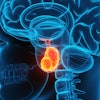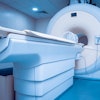MR spectroscopy (MRS) may help in the early detection of chronic traumatic encephalopathy (CTE), according to a study presented Wednesday at the RSNA 2010 meeting in Chicago.
CTE is a degenerative brain disease caused by repeated head trauma, such as concussions from contact sports, and marked by a buildup of abnormal proteins in the brain. Currently, it can only be definitively diagnosed at autopsy.
An estimated 3.8 million sports- and recreation-related concussions occur in the U.S. each year. In addition, subclinical concussions -- injuries that cannot be diagnosed as concussions but have similar effects -- are often unrecognized, according to the U.S. Centers for Disease Control and Prevention. And studies have shown that individuals who suffer repetitive brain trauma are more likely to experience ongoing problems, from permanent brain damage to long-term disability.
"MRS may provide us with noninvasive, early detection of CTE before further damage occurs, thus allowing for early intervention," said Alexander Lin, PhD, a principal investigator at the Center for Clinical Spectroscopy at Brigham and Women's Hospital in Boston.
The current study, led by Carolyn Mountford, DPhil, and conducted in collaboration with the Boston University Center for the Study of Traumatic Encephalopathy, used MRS to examine five retired professional male athletes from football, wrestling, and boxing with suspected CTE and five age- and size-matched controls between the ages of 32 and 55.
The results revealed that compared with the brains of the control patients, the brains of the former athletes with suspected CTE had increased levels of choline, a cell membrane nutrient that signals the presence of damaged tissue, and glutamate/glutamine (Glx). MRS also revealed altered levels of gamma-aminobutyric acid (GABA), aspartate, and glutamate in the brains of former athletes.
"By helping us identify the neurochemicals that may play a role in CTE, this study has contributed to our understanding of the pathophysiology of the disorder," Lin said. For example, the amino acid and neurotransmitter glutamate is involved in most aspects of normal brain function and must be present in the right places and at the right concentration for the brain to be healthy -- too much or too little can be harmful.
"Being able to diagnose CTE could help athletes of all ages and levels, as well as war veterans who suffer mild brain injuries, many of which go undetected," Lin said.
Related Reading
fMRI gauges concussions in high school football players, November 22, 2010
MRI helps uncover evolution of postconcussion symptoms, March 5, 2009
MRI finds long-term concussion effects, August 29, 2004
Brain damage in boxers occurs long before symptoms, November 15, 2002
Copyright © 2010 AuntMinnie.com



.fFmgij6Hin.png?auto=compress%2Cformat&fit=crop&h=100&q=70&w=100)




.fFmgij6Hin.png?auto=compress%2Cformat&fit=crop&h=167&q=70&w=250)











